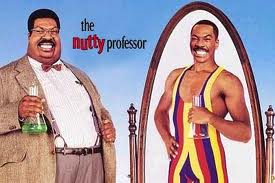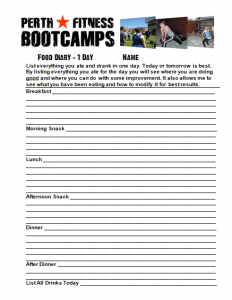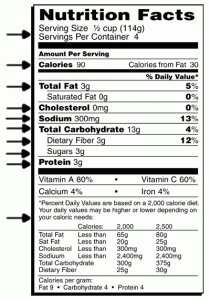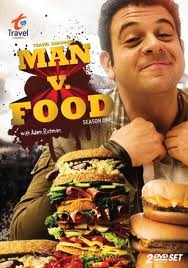 How many different diets have you tried in your life? I know I’ve sampled my fair share and I’m still stuck into one. The latest instalment started in August 2010, but since then it’s undergone a few tweaks along the way. This is normal and you should totally expect it, rather than be upset or frustrated because of limited progress.
How many different diets have you tried in your life? I know I’ve sampled my fair share and I’m still stuck into one. The latest instalment started in August 2010, but since then it’s undergone a few tweaks along the way. This is normal and you should totally expect it, rather than be upset or frustrated because of limited progress.
Each of us has the same body more or less. The major differences, aside from appearance, are internal health often influenced by genetics.
So if two people of roughly the same height and weight go on the same diet and eat exactly the same thing, they often won’t lose the same amount of weight in the same time period.
One may require a little more carbs or fat or protein than the other. In the same way one person may have a food intolerance or allergy that prevents them from eating a particular food. Or they may have a gastrointestinal issue that requires the elimination of some foods to help the gut repair itself.
Insanity is doing the same thing over and over again and expecting different results.
Confusing? It is for me so you have every right to be confused.
The whole fat loss game is one of the most confusing topics around. After studying countless diets, witnessing many transformations and watching some people bounce back to their old habits and bodies, it is an area I’m very happy to be working in despite its difficulties.
Fine Tuning Your Diet.
Weighing and measuring yourself
In order to know if you are making progress with any physical transformation, you must have a reference point.
Weighing yourself can be good but also can be bad. Scales are a depressing tool to many people so if you don’t like em, don’t use em. With my clients I use body fat percentage to check if the body is losing fat and/or gaining muscle. Either way it will indicate if things are moving in the right direction.
A better way is by measurements. Using a tape measure check your waist measurement and hip measurement as a minimum. These are the 2 most important markers for measuring fat loss, but not the only ones. You can also check arms and legs, bust, shoulders, etc, but remember to take multiple measurements at the same site to ensure you get the correct reading.
I find that if you check your weight, body fat percentage and or measurements weekly or every 2 weeks, you will can keep making small adjustments and moving in the right direction.
 Keeping a food diary.
Keeping a food diary.
If your body is not changing, then you need to change something that you are putting into it.
If you don’t know exactly what and how much you are eating and drinking, how will you know what you need to change? A food diary will show you everything, as long as you write it all down. Then you go through the list and see what you may be able to swap or eliminate.
Your problem may be portion sizes.
You may be eating way too many carbs and not enough protein and fat.
You may be drinking your calories and destroying your perfect food week.
How much protein, carbs and fat should I eat each day?
It’s a tough question and varies for individuals, but here’s a traditional macronutrient ration from Bodybuilder and fat loss author Tom Venuto.
50-55% carbohydrates
30% protein
15-20% fat
Not everyone will drop fat with these numbers. You may have to increase the protein and fat and drop the carbs slightly. Some may do better just increasing the protein and dropping the carbs without changing the fat. Zero fat shouldn’t be attempted as fat is absolutely necessary for maintaining good health and normal bodily functions.
This is from Tom Venuto:
‘If you choose the low carb approach to dieting, the best method is to decrease your carbohydrates moderately. Never cut your carbs out completely! It’s not necessary, it’s not healthy, it’s hard to stick to and it’s no fun! It’s usually not wise to go to extremes in anything and this is as true for nutrition as with anything else in life: moderation is the key.
The “modified” low carb diet might look something like this:
40% carbohydrates
40% protein
20% fat’
Get your carbs from mostly fruits and vegetables and some unprocessed whole grains if you need them.
Get protein from predominantly meat, fish, eggs and protein shakes if you don’t have time to prepare or eat real food.
Get your fat from avocado, coconut and olive oil, fish oil and small quantities of nuts and seeds.
Another approach is higher carbs on heavy training days and lower carbs on non-training or light training days. This is a more advanced technique but one I’ve used in the past with great success.
Reading the nutritional information on food packaging.
 If you don’t know what you are eating why are you surprised you look the way you do?
If you don’t know what you are eating why are you surprised you look the way you do?
If you believe what the media labels ‘health food’ you’re in for a big surprise. The closer you look the more you will notice what is really in those health foods. Some of these foods are so calorie dense, that a small serve can sabotage all efforts to eat well for the week.
Read the label for how much carbs, protein and fat you get per serve.
Stay away from artificial colours, flavours and preservatives. This stuff will make you sick. Diet drinks and artificial sweeteners are not good.
Many foods labelled ‘low fat’ are high in carbohydrates (often sugar).
The more often you read, the more you will understand.
If it’s a fresh product without a label you can look it up on www.calorieking.com.au
Weighing your food.
This is not always necessary but will help you in determining serving sizes.
A serve of meat is roughly the size and thickness of your palm, but how many grams of protein is that? I couldn’t tell you. But the scales and www.calorieking.com.au could.
Want to check that you are not eating too much rice at dinner time? Weigh it, or check the label for how much a cup is and work it out from there.
Cheat meals, the 90% rule and why you should be abide.
Cheat meals help you keep your sanity. By the time it gets to the weekend, your discipline wanes and you know you want something
bad. We’re all the same. But you should plan it out.
If you are gonna eat out Friday and Saturday nights, then schedule those nights as your cheat meals and do your best to eat well all day Friday and all day Saturday and go back to strict eating on Sunday.
The 90% rule is not a short term fix just to lose weight. It’s there to keep you healthy so you live a long life. If you are not healthy then you will not be able to achieve your goals in any area of life. Put your health first and aim for healthy eating 90% of the time.
Always come back to the 10 food rules.
If you are on a diet or not on a diet, you should always abide by The 10 Food Rules. Even on my diet which basically tells me which foods I should eat and which ones to avoid, I still stick to the food rules.
By doing so I’ve dropped to a consistently low body fat and have sustained energy (balanced blood glucose levels) rather than eating foods that cause an insulin spike followed by a crash.
They are very simple and will help anyone lose weight without a diet. There is plenty written about them on the blog and they should be referred back to regularly.
Your body is like any high performance car. It needs to be tested and tweaked to work at its optimum level and when it does, everything works better. Make a few tweaks and you’ll keep making progress.

